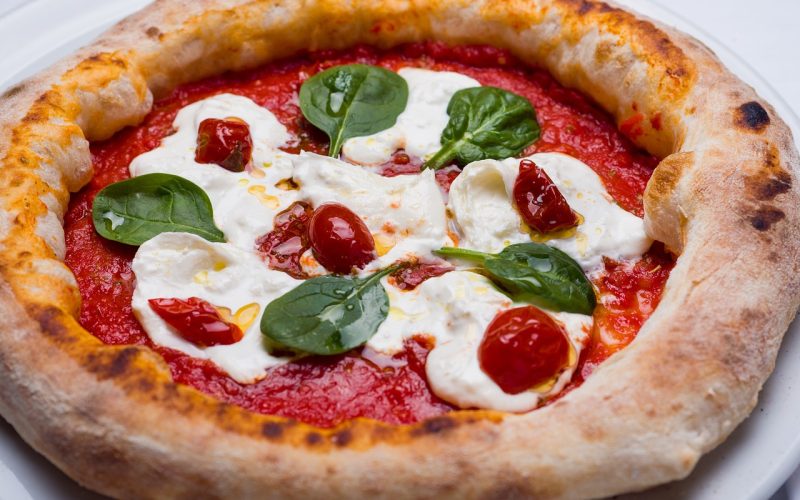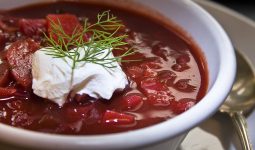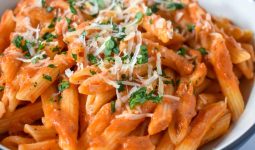Pizza – just the word itself makes your mouth water, doesn’t it? From the gooey melted cheese to the flavorful marinara sauce and endless toppings, it’s hard to find someone who doesn’t enjoy a good slice of pizza.
Whether you’re a fan of thin crust, deep dish, or Neapolitan style, there’s a pizza out there for everyone.
The Need to Know Your Numbers
But if you’re conscious about your calorie intake, you might ask, ‘How many calories are in pizza?’ Understanding the caloric content of your favorite foods is part of a conscious eating approach, often called calorie counting.
The answer to ‘how many calories in pizza’ isn’t as straightforward as you might think.
The caloric content of a pizza can greatly vary depending on a multitude of factors, such as the type of crust, the toppings used, the amount of cheese, and even the cooking method. But don’t worry; we’re here to break it down for you!
In the following sections, we’ll delve into the different components of a pizza and their caloric contributions, explore various types of pizzas and their caloric content, and discuss the factors that can affect the total number of calories in your slice. Stay tuned to get the full scoop on how many calories in pizza.
Breaking Down the Pizza
To fully understand how many calories in pizza, it’s essential to break down this universally loved dish into its core components.
Let’s explore the caloric content of the pizza base, cheese, and toppings.
Pizza Base and Its Caloric Content
The pizza base serves as the canvas for your pizza. It’s the first layer of your pizza and significantly determines the overall caloric content.
The type of dough used, its thickness, and the size of the pizza can all affect the number of calories.
For example, a medium-sized thin crust pizza base can contain approximately 800-1000 calories.
On the other hand, a medium-sized thick crust pizza base may contain around 1000-1200 calories.
Remember, these numbers can vary based on the recipe used and the size of the pizza base.
The Cheese Factor
Cheese is a crucial component of pizza, lending it its creamy, savory flavor. However, it also contributes significantly to the pizza’s caloric content.
The type of cheese used can dramatically affect the caloric content. For instance, a slice of pizza can contain about 80-100 calories from mozzarella cheese.
For more detailed information on the caloric content of cheese, check out our article on how many calories in a slice of cheese.
Toppings and Their Caloric Contributions
The toppings on a pizza can vary widely, from vegetables to meats, and each contributes its own set of calories.
For instance, a popular pizza topping, pepperoni, adds about 50-60 calories per slice.
On the other hand, vegetable toppings like mushrooms, peppers, and onions contribute fewer calories, usually about 5-10 calories per slice.
Here’s a simple table to illustrate the average caloric contribution of some common pizza toppings:
| Topping | Calories Per Slice |
|---|---|
| Pepperoni | 50-60 |
| Sausage | 70-80 |
| Mushrooms | 5 |
| Peppers | 5 |
| Onions | 5 |
Please note that these values can vary based on the quantity of the toppings used.
By understanding the caloric content of each component of your pizza, you can make informed choices to manage your calorie intake.
Remember, it’s not just about how many calories in pizza but also where those calories come from.
Different Types of Pizza and Their Calories
When it comes to pizza, not all are created equal. The type, size, and toppings can significantly change the caloric content.
Let’s take a look at three popular types of pizzas and how many calories in pizza of these types you might consume.
Thin Crust Pizza
Thin crust pizza, also known as New York-style pizza, is known for its thin and crispy crust.
With less dough, the calorie content in thin crust pizza is generally lower compared to other types.
However, the toppings can add a significant amount of calories.
Here’s a basic breakdown:
| Thin Crust Pizza (per slice) | Calories |
|---|---|
| Cheese | 190 |
| Pepperoni | 210 |
| Veggie | 170 |
Remember, these numbers can vary based on the specific ingredients and portion sizes.
For more details, refer to our article on how many calories in one slice of pizza.
Deep Dish Pizza
Deep dish pizza, often associated with the city of Chicago, is known for its thick crust and hearty toppings.
Because of the extra dough and generous amount of cheese and toppings, a slice of deep dish pizza can contain more calories than other types.
| Deep Dish Pizza (per slice) | Calories |
|---|---|
| Cheese | 330 |
| Pepperoni | 360 |
| Veggie | 310 |
Again, these values can fluctuate based on the size of the slice and the specific ingredients used.
Neapolitan Pizza
Neapolitan pizza is a traditional Italian style pizza characterized by a thin, soft, and chewy crust.
The toppings are usually simple, often just tomato sauce, fresh mozzarella, and basil.
This simplicity results in a lower calorie count compared to other types.
| Neapolitan Pizza (per slice) | Calories |
|---|---|
| Margherita | 250 |
| Marinara | 200 |
Remember, when you’re wondering about the number of calories in pizza, factors such as the type of crust, amount and type of cheese, and the toppings used can significantly affect the final count.
Understanding this allows you to make better decisions to fit your dietary needs.
For more information on calorie counting and how to do it effectively, check out our article on what is calorie counting.
Factors Affecting Caloric Content of Pizza
When you’re calculating how many calories are in pizza, there are a few key factors that can influence the final count.
Let’s explore these factors so you can make more informed decisions about your pizza indulgence.
Size Matters: The Influence of Portion Sizes
The size of your pizza slice significantly impacts the total caloric count. Bigger slices naturally pack more calories.
For instance, a large slice of pizza will have more calories than a medium or small slice.
This may seem obvious, but it’s worth noting if you’re trying to keep track of your calorie intake.
| Portion Size | Average Calories |
|---|---|
| Small slice | 200-250 |
| Medium slice | 250-300 |
| Large slice | 300-350 |
To learn more about portion sizes and their impact on calorie counting, check out our article on what is calorie counting.
The Role of Ingredients
The ingredients used in making a pizza also play a significant role in determining its overall caloric content. Different ingredients come with different caloric values.
For example, a pizza loaded with high-calorie toppings like pepperoni, sausage, and extra cheese will contain more calories than a pizza topped with veggies.
Similarly, a pizza with a thick, cheese-stuffed crust will have more calories than a pizza with a thin, crisp crust.
To better understand how ingredients affect calorie counts, you might want to compare the calories in common pizza ingredients with those in other foods.
You can use our other guides, like how many calories in feta cheese or how many calories in rice, as references.
Cooking Methods and Their Impact
The way a pizza is cooked can also affect its calorie content. For instance, deep-fried pizza (yes, it exists!) will have more calories than a pizza cooked in a traditional oven due to the extra fat absorbed during frying.
On the other hand, a pizza cooked on a grill might have fewer calories, as this cooking method can help reduce the overall fat content.
Keep in mind that these are just general guidelines. The actual caloric content can vary widely based on specific recipes and cooking techniques.
But by understanding these factors, you can make more informed decisions the next time you’re figuring out how many calories are in pizza.
Stay tuned for the next section, where we’ll discuss how to make wise choices to keep your pizza calorie count low.
Wise Choices: How to Keep Your Pizza Calorie Count Low
Who says you can’t enjoy a delicious pizza while watching your calorie intake? With the right choices and a bit of creativity, you can indulge in your favorite treat without worrying about how many calories in pizza.
Here are some strategies for keeping the calorie count down.
Choosing the Right Ingredients
When it comes to pizza, the ingredients you choose can significantly impact the calorie count. Opt for a thin crust instead of a deep-dish or stuffed crust to save on calories.
Choose lean proteins like grilled chicken or turkey instead of high-fat meats like sausage or pepperoni.
As for the cheese, opt for part-skim mozzarella or a light sprinkling of a strong-flavored cheese like feta.
These choices can provide the cheesy goodness you crave without piling on the calories.
For more information about cheese calories, visit our article on how many calories in a slice of cheese.
Moderation is the Key
Remember, it’s not just what you eat but how much you eat. One of the easiest ways to keep your pizza calorie count low is to watch your portion sizes.
Instead of eating half the pizza, limit yourself to one or two slices and pair it with a side salad to help fill you up.
If you’re wondering about the calorie content of a single slice, check out our article on how many calories in one slice of pizza.
Healthy Alternatives to Traditional Toppings
One of the best ways to cut back on pizza calories is by choosing healthier toppings.
Instead of high-calorie, high-fat toppings like sausage or extra cheese, try loading up your pizza with vegetables. They add flavor and texture without adding a lot of calories.
Some great options include bell peppers, onions, mushrooms, spinach, and tomatoes.
If you’re a meat lover, consider using lean proteins like grilled chicken, turkey, or even seafood.
Remember, every little bit helps when it comes to managing your calorie intake.
By making these wise choices, you can enjoy your favorite pizza without worrying about the calorie content. Now, that’s something to celebrate!
For more information on calorie counting and making healthier food choices, check out our article on what is calorie counting.








